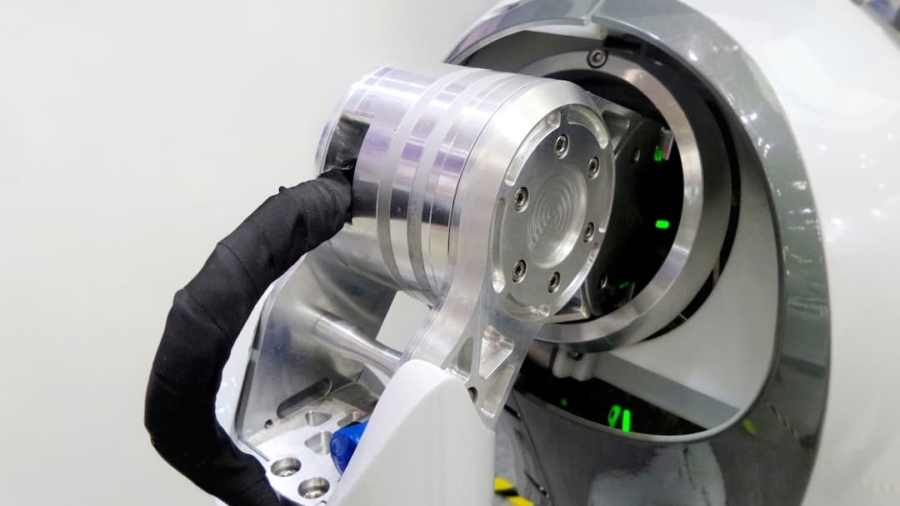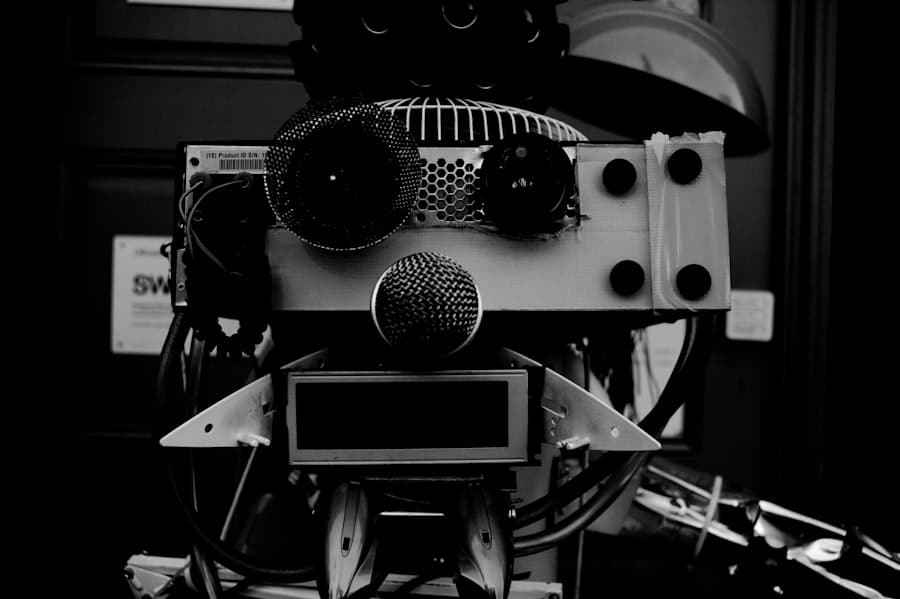Deep-space missions represent the pinnacle of human exploration, pushing the boundaries of our understanding of the universe and our place within it. These missions venture far beyond the confines of Earth’s atmosphere, often targeting celestial bodies such as Mars, asteroids, and even the outer planets of our solar system. The complexity and distance involved in these missions necessitate advanced technologies and innovative approaches to overcome the myriad challenges presented by the harsh environment of space.
As we embark on these ambitious journeys, the integration of cutting-edge technologies becomes paramount, enabling us to gather invaluable data and insights about the cosmos.
Each mission has contributed to our understanding of planetary science, astrophysics, and even the potential for extraterrestrial life.
As we look to the future, the role of artificial intelligence (AI) and robotics is becoming increasingly critical. These technologies not only enhance our capabilities but also allow for more autonomous operations in environments where human intervention is limited or impossible. The synergy between AI, robotics, and deep-space exploration is paving the way for a new era of discovery.
Key Takeaways
- Deep-space missions involve sending spacecraft beyond Earth’s orbit to explore outer space.
- AI plays a crucial role in deep-space missions by enabling autonomous decision-making and data analysis.
- Robotics are essential in deep-space missions for tasks such as assembly, maintenance, and exploration in harsh environments.
- The use of AI and robotics in deep-space missions can increase efficiency, reduce human error, and enable exploration of distant and dangerous locations.
- Challenges in implementing AI and robotics in deep-space missions include communication delays, reliability in extreme conditions, and ethical considerations.
The Role of AI in Deep-Space Missions
Overcoming Traditional Limitations
Traditional space missions relied heavily on ground control for decision-making, which could lead to delays and inefficiencies, especially in time-sensitive situations. AI systems can analyze data from onboard instruments, assess environmental conditions, and autonomously adjust mission parameters without waiting for instructions from Earth.
Enhancing Navigation and Trajectory Optimization
The capability of AI is particularly crucial for missions that operate at great distances, where communication delays can span several minutes or even hours. One notable application of AI in deep-space missions is in navigation and trajectory optimization. For instance, NASA’s Mars rovers utilize AI algorithms to navigate the Martian terrain autonomously. These algorithms process data from various sensors to identify obstacles, plan safe paths, and execute maneuvers without human intervention.
Accelerating Scientific Discovery
AI can assist in scientific data analysis by identifying patterns and anomalies in large datasets collected during missions, thereby accelerating the pace of discovery. This level of autonomy not only enhances the efficiency of the mission but also allows for more extensive exploration of the surface, as rovers can adapt their routes based on real-time conditions.
The Role of Robotics in Deep-Space Missions
Robotics has been an integral part of deep-space exploration since its inception. Robotic spacecraft and landers are designed to withstand extreme conditions, such as intense radiation, vacuum, and temperature fluctuations that would be inhospitable to human life. These machines are equipped with sophisticated instruments that allow them to conduct experiments, collect samples, and transmit data back to Earth.
The versatility of robotic systems makes them ideal for exploring distant celestial bodies where human presence is not feasible. One prominent example of robotics in deep-space missions is the Mars rover program. Rovers like Curiosity and Perseverance are equipped with advanced robotic arms that can manipulate tools and conduct scientific experiments on the Martian surface.
These rovers are designed to perform a variety of tasks, from drilling into rocks to analyze their composition to capturing high-resolution images of the landscape. The use of robotics not only enhances our ability to explore but also reduces risks associated with human spaceflight, allowing us to gather critical information about other planets while keeping astronauts safe on Earth or in low-Earth orbit.
Advantages of Using AI and Robotics in Deep-Space Missions
The integration of AI and robotics into deep-space missions offers numerous advantages that significantly enhance mission success rates and scientific output. One of the primary benefits is increased autonomy. With AI-driven systems, spacecraft can operate independently for extended periods, making real-time decisions based on their immediate environment.
This autonomy is particularly beneficial during critical phases of a mission, such as landing on a planetary surface or navigating through asteroid belts, where split-second decisions can mean the difference between success and failure. Moreover, AI and robotics enable more efficient data collection and analysis. Traditional methods often require extensive human oversight, which can slow down the process of scientific discovery.
In contrast, AI algorithms can sift through vast datasets quickly, identifying trends and anomalies that might be missed by human analysts. This capability allows scientists to focus on interpreting results rather than spending time on data processing. Additionally, robotic systems can be designed to operate continuously without fatigue, allowing for prolonged exploration missions that gather more data over time.
Challenges of Implementing AI and Robotics in Deep-Space Missions
Despite the numerous advantages offered by AI and robotics in deep-space missions, several challenges must be addressed to fully realize their potential. One significant hurdle is the development of reliable AI algorithms that can function effectively in unpredictable environments. Space is inherently chaotic; factors such as cosmic radiation, micrometeoroids, and extreme temperatures can affect both hardware and software performance.
Ensuring that AI systems can adapt to these conditions without failure is a critical concern for mission planners. Another challenge lies in the complexity of programming robotic systems for autonomous operation. While AI can enhance decision-making capabilities, it requires extensive training on diverse datasets to ensure reliability in various scenarios.
This training process can be time-consuming and resource-intensive. Additionally, there is a need for robust communication protocols between AI systems and ground control to ensure that any necessary updates or corrections can be implemented efficiently during a mission. Balancing autonomy with oversight remains a delicate task that requires careful consideration.
Examples of AI and Robotics in Current Deep-Space Missions
Several current deep-space missions exemplify the successful integration of AI and robotics into exploration efforts. NASA’s Perseverance rover, which landed on Mars in February 2021, is equipped with advanced AI capabilities that allow it to navigate autonomously across the Martian landscape. The rover uses a system called Terrain-Relative Navigation (TRN), which enables it to identify landmarks and adjust its trajectory during descent to ensure a safe landing.
Once on the surface, Perseverance employs AI algorithms to select scientific targets for investigation based on its onboard analysis. Another notable example is the European Space Agency’s (ESA) Rosetta mission, which successfully orbited and landed on comet 67P/Churyumov-Gerasimenko. The mission utilized a combination of robotic systems and AI-driven data analysis to study the comet’s composition and behavior over time.
The Philae lander was equipped with various instruments that operated autonomously while transmitting data back to Rosetta for further analysis. This collaboration between robotic systems allowed scientists to gather unprecedented insights into cometary science.
Future Implications of AI and Robotics in Deep-Space Exploration
The future implications of AI and robotics in deep-space exploration are vast and promising. As technology continues to advance, we can expect even greater levels of autonomy and sophistication in robotic systems designed for space missions. Future missions may involve swarms of small robotic units working collaboratively to explore planetary surfaces or asteroids, sharing data in real-time to create comprehensive maps or conduct complex experiments.
Moreover, as we venture further into space—potentially targeting destinations like Europa or Titan—AI will play a crucial role in managing the complexities associated with these environments. For instance, missions aimed at exploring subsurface oceans may require robots capable of operating under ice layers or within extreme pressure conditions. The development of specialized robotic systems equipped with AI will be essential for conducting such explorations safely and effectively.
Ethical Considerations of AI and Robotics in Deep-Space Missions
As we increasingly rely on AI and robotics for deep-space exploration, ethical considerations must be addressed to ensure responsible use of these technologies. One primary concern revolves around decision-making autonomy; as robots become more capable of making independent choices during missions, questions arise about accountability in case of failures or unintended consequences. Establishing clear guidelines regarding the extent of autonomy granted to robotic systems will be essential for maintaining ethical standards.
Additionally, there are implications related to planetary protection protocols.
Ensuring that robotic systems adhere to strict sterilization protocols is vital for preserving extraterrestrial ecosystems while also safeguarding our own planet from potential biological contamination.
In conclusion, while deep-space missions present extraordinary opportunities for discovery and advancement in our understanding of the universe, they also necessitate careful consideration of ethical implications surrounding AI and robotics. Balancing innovation with responsibility will be crucial as we continue our journey into the cosmos.
A related article discussing the new world of possibilities with the Samsung Galaxy Chromebook 2 360 can be found




